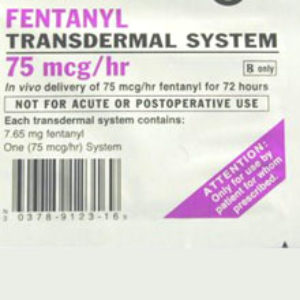Fentanyl Patch Safety Will Be Focus of FDA Public Hearing

Public hearings will be held by federal regulators on Friday, to discuss the effectiveness of a seven-year-old program designed to mitigate the risks associated with fentanyl patches, which have been linked to a number of recalls due to problems where the concentrated painkiller may leak from the pain patch, resulting in overdoses and fatalities.
The FDA will host a joint meeting of its Drug Safety and Risk Management and Anesthetic and Analgesic Drug Products advisory committees on August 3, at the agency’s White Oak campus in Silver Spring, Maryland. The committees will discuss the results of recent assessments of the effectiveness of risk evaluation and mitigation strategies (REMS) linked to the use of transmucosal immediate-release fentanyl (TIRF) medicines; more commonly known as fentanyl patches.
The fentanyl patch was originally introduced as the brand name Duragesic pain patch, manufactured by a subsidiary of Johnson & Johnson. It is now widely available as a generic, and a number of drug companies make versions, including Watson, ALZA and Mylan Pharmaceuticals.
The pain patch products contains powerful fentanyl gel, which is designed to be slowly delivered through the skin in a regulated manner. However, if the gel comes into direct contact with the skin, it can have devastating consequences.
Since it was introduced, the Duragesic patch has been plagued by a number of manufacturing problems, where some patches contained defects that allowed gel to leak out of the patch, posing a risk of fentanyl overdose.
In December 2011, the FDA put in place a REMS program designed to make the manufacture and distribution of fentanyl patches safer. However, the drug has become linked to the national opioid crisis, not due to the patches, but due to synthetic fentanyl which has infiltrated the country from overseas, experts say.
FDA Commissioner Scott Gottlieb issued a press release on August 1, indicating that the public meeting was an important part of the agency’s fight against opioid abuse. But he also noted that it was still important that the FDA help ensure patients suffering from significant pain get access to needed relief.
“These TIRF products are medically important but also pose serious risks,” Gottlieb said in the press release. “We’re seeking the advice of outside experts on the effectiveness of the REMS and whether changes to the REMS might be necessary.”
Gottlieb noted that since the REMS was put into place, there has been a significant decline in fentanyl patch prescribing, and that they are currently only prescribed to about 5,000 patients nationwide. Even then, Gottlieb said that the data indicates that 42% of fentanyl patches are prescribed to non-opioid tolerant patients.
According to the statement, the FDA will ask the committees to evaluate the reliability of the FDA’s current data, to look at whether fentanyl patches are being used to help patients most in need, and whether the prescribing patterns are currently contributing to adverse health outcomes.
Gottlieb also indicated that the FDA will seek data from manufacturers to get a better picture of how well the fentanyl patch REMS program is working. However, his comments appear to suggest the agency is looking into expanding their use once again.
“Ultimately, we need the advisory committee experts to advise the FDA on whether the new approaches we are considering will put us on the right path to helping patients in pain by making it possible for them to get these medicines while also reducing their known serious risks,” Gottlieb wrote. “As part of our ongoing commitment to the safe use of these products, the FDA will seek the committee’s feedback on any possible modifications to the TIRF REMS goals and requirements, as well as input on the adequacy of the evaluations conducted in the REMS assessments to determine whether the TIRF REMS goals are being met.”
The advisory committees’ recommendations are non-binding, but often have a significant effect on FDA policy.
Multiple fentanyl patch recalls have been issued by different manufacturers over the past decade, leading many critics to question whether the pain patch can be safely manufactured. If the fentanyl gel leaks out due to a manufacturing defect or is delivered through the skin at a faster rate than intended, it can cause potentially fatal overdose.
The FDA has also issued several safety warnings about risks associated with fenanyl patches. In September 2013 the FDA even issued a drug safety communication reminding users that the fentanyl patch can remain deadly even after it is discarded, warning users and caregivers to exercise care with proper disposal.
The joint advisory committee hearing on the fentanyl patch REMS program will be held on August 3 from 8 a.m. to 5 p.m. at the FDA White Oak Campus, 10903 New Hampshire Avenue, Building 31 Conference Center, Room 1503 in Silver Spring, Maryland.
Get more articles like this sent directly to your inbox.
"*" indicates required fields







0 Comments